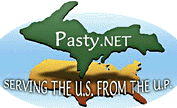By Capt. Paul (Eclogite) on Friday, April 18, 2008 - 10:55 pm:
Earthquakes in that area of the US are very interesting becuase the characteristics of the bedrock transmit earthquake waves much farther that they would in the western US. If a magnitude 5.2 quake occurred in California, it would not have been felt as far away as this quake because of the underlying rock types.
And now for some of the hazards. One hazard is landslides. In the Mississippi River Valley, there is a lot of loess which is rock flour created by glaciers. When shaken (not stirred), loess becomes very unstable. The second hazard, which is much cooler, is liquifaction. Liquifaction occurrs where there is water satuated sediment. When shaken, the sediment turns to liquid. Houses built on this type of sediment can actually sink into the ground like a ship sinking into the ocean. Also with liquifaction, you can get what are called sand volcanoes. This is where the shaking creates water pressure where the sand erupt out of the ground and flows much like a mini lava flow.
Any other questions, just ask ;-)
By David Hiltunen (Davidcorrytontn) on Saturday, April 19, 2008 - 11:07 am:
Well, Whip-poor me-if you-will Ken. That makes a hole lotta sense to me Capt.Paul. My question for you would be, if I sent you a picture of my foot, could you tell me if it is athletes foot? ;<) If you haven't been over on to the Global Warming page to read Dr. Nat, do so now while you have the time. Enjoy your weekend,just like Mother Earth,it's mine too.

